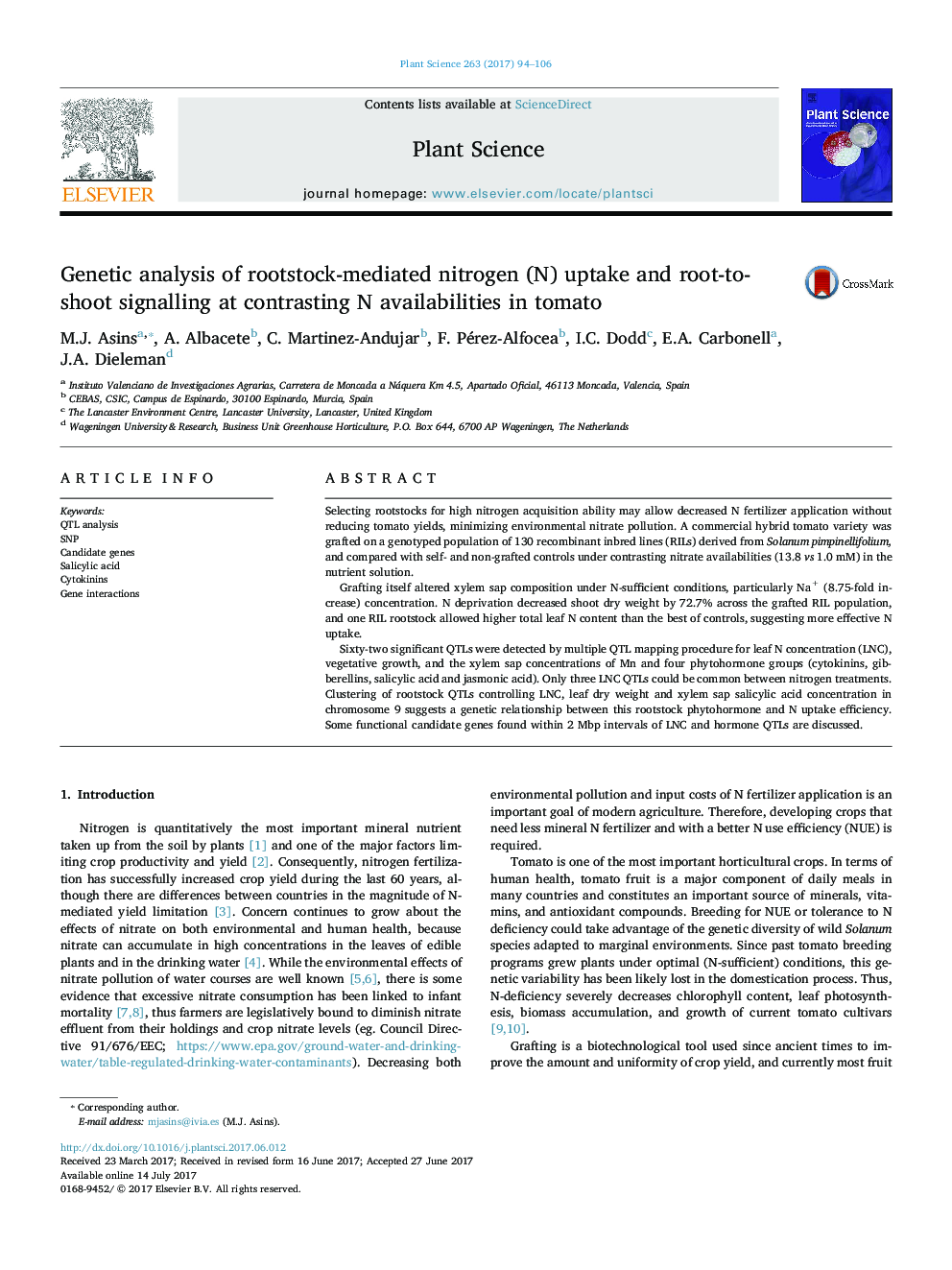| Article ID | Journal | Published Year | Pages | File Type |
|---|---|---|---|---|
| 5515763 | Plant Science | 2017 | 13 Pages |
â¢Grafting itself increased [Na+] in the xylem sap under N-sufficient conditions.â¢Three QTLs governing LNC were common under contrasting N availabilities.â¢The wild allele increased LNC for most rootstock QTLs under N-sufficient conditions.â¢QTLs for rootstock-mediated N uptake efficiency were clustered in chromosome 9.â¢Three coding genes for nitrate transporters were found within LNC QTL intervals.
Selecting rootstocks for high nitrogen acquisition ability may allow decreased N fertilizer application without reducing tomato yields, minimizing environmental nitrate pollution. A commercial hybrid tomato variety was grafted on a genotyped population of 130 recombinant inbred lines (RILs) derived from Solanum pimpinellifolium, and compared with self- and non-grafted controls under contrasting nitrate availabilities (13.8 vs 1.0Â mM) in the nutrient solution.Grafting itself altered xylem sap composition under N-sufficient conditions, particularly Na+ (8.75-fold increase) concentration. N deprivation decreased shoot dry weight by 72.7% across the grafted RIL population, and one RIL rootstock allowed higher total leaf N content than the best of controls, suggesting more effective N uptake.Sixty-two significant QTLs were detected by multiple QTL mapping procedure for leaf N concentration (LNC), vegetative growth, and the xylem sap concentrations of Mn and four phytohormone groups (cytokinins, gibberellins, salicylic acid and jasmonic acid). Only three LNC QTLs could be common between nitrogen treatments. Clustering of rootstock QTLs controlling LNC, leaf dry weight and xylem sap salicylic acid concentration in chromosome 9 suggests a genetic relationship between this rootstock phytohormone and N uptake efficiency. Some functional candidate genes found within 2 Mbp intervals of LNC and hormone QTLs are discussed.
Graphical abstractDownload high-res image (161KB)Download full-size image
